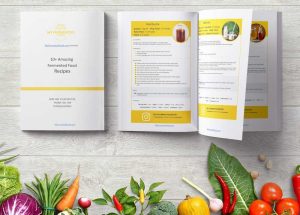Description
This sake recipe uses short grain rice or sweet rice. You can buy sweet rice for Sake from Asian stores. It takes about a month to ferment, longer the better.
Ingredients
- Approximately 3–4 cups of cooked short grain rice or sweet rice.
- 3 Chinese yeast balls
- Berries like blueberries (optional) – for flavor. This is added after the fermentation period, before bottling the sake.
Equipment
- Clean plastic bucket for fermentation. This should come with a lid and airlock. You need at least 3-5 gallon size.
- Rice cooker – large enough to cook 5 cups of rice. You can also cook your rice in a pressure cooker or in a saucepan with a lid like you normally do.
- Clean tray or plate to cool the cooked rice on
- 2 paint strainers or cheesecloth strainers. These should fit over the plastic fermentation bucket. Sterilize the paint strainer with hot water or sterilizing solution.
- A 3–5 gallon glass carboy with airlock.
- Sterilizing solution.
- Clean spoons
- 3–4 clean glass bottles to store the wine in.
- Siphoning equipment
Instructions
- Rinse the rice until it runs clear.
- Cook the rice in the rice cooker. Grains should be cooked completely.
- Crush the Chinese yeast balls into a powder.
- Spread the cooked rice on a clean, sterilized tray or plate to cool down to room temperature.
- Sprinkle the Chinese yeast powder all over the rice. Reserve a bit of the yeast. We will add it later to the rice when we add it in the paint strainer over the plastic fermentation bucket. Mix the rice and the yeast well.
- If you haven’t already, now is the time to sterilize the paint strainer or cheesecloth. Place it in hot water for 5 minutes. You can also sterilize it with the sterilizing solution.
- Arrange the sterilized paint strainer over the mouth of the plastic bucket.
- Place the rice in the strainer. Add more yeast over the top of the rice.
- Place the lid of the bucket and add an airlock.
- Let the rice ferment for 21-30 days. The rice will start to disintegrate and remain in the strainer, while the wine will trickle into the bucket.
- After 3-4 weeks, strain the crumbled rice. The paint strainer will ease this process although a cheese cloth will work just as fine. Place the second strainer (sterilized of course!) over a clean utensil. Add the crumbled rice from the bucket on the strainer.
- With clean hands, squeeze the strainer or cheesecloth properly to get milky white liquid in the utensil.
- Pour the milky-white liquid into a sterilized glass carboy for further fermentation. Close the carboy with airlock.
- To help the wine settle, you can add a bit of bentonite to the liquid.
- After a few days, the white sediment will settle to the bottom of the carboy.
- At this point, you can siphon off the clear liquid into prepared (sterilized) glass bottles with lids. Make sure you sterilize the siphoning and racking equipment thoroughly with the sterilizing solution before use.
- Pasteurize all of the filled sake bottles in a hot water bath at 145°F for 30 minutes. Flavor your wine by adding crushed berry juice directly to the bottle after siphoning.
Notes
Cleanliness and temperature control are key as is the water you use for cooking the rice. Make sure you use non-chlorinated water only. Cook the rice grains well. Chinese sake yeast is always the best choice but you can also use champagne or wine yeast. You can also make your own yeast by soaking ¼ cup of raisins in hot water and letting it sit for a while. Use this wild, natural yeast instead of packaged, commercial yeast. Do not suffocate the brew. Sake is ideally stirred frequently in open vats. So stir or shake the plastic bucket once every 5 days. If you are not pasteurizing your bottles, the fermentation and carbon dioxide formation will continue. So do not tighten the bottle lids and allow the gas to escape. Do not discard the white sediment. You can use it as marinade for fish and meats.
- Prep Time: 1 Hour

